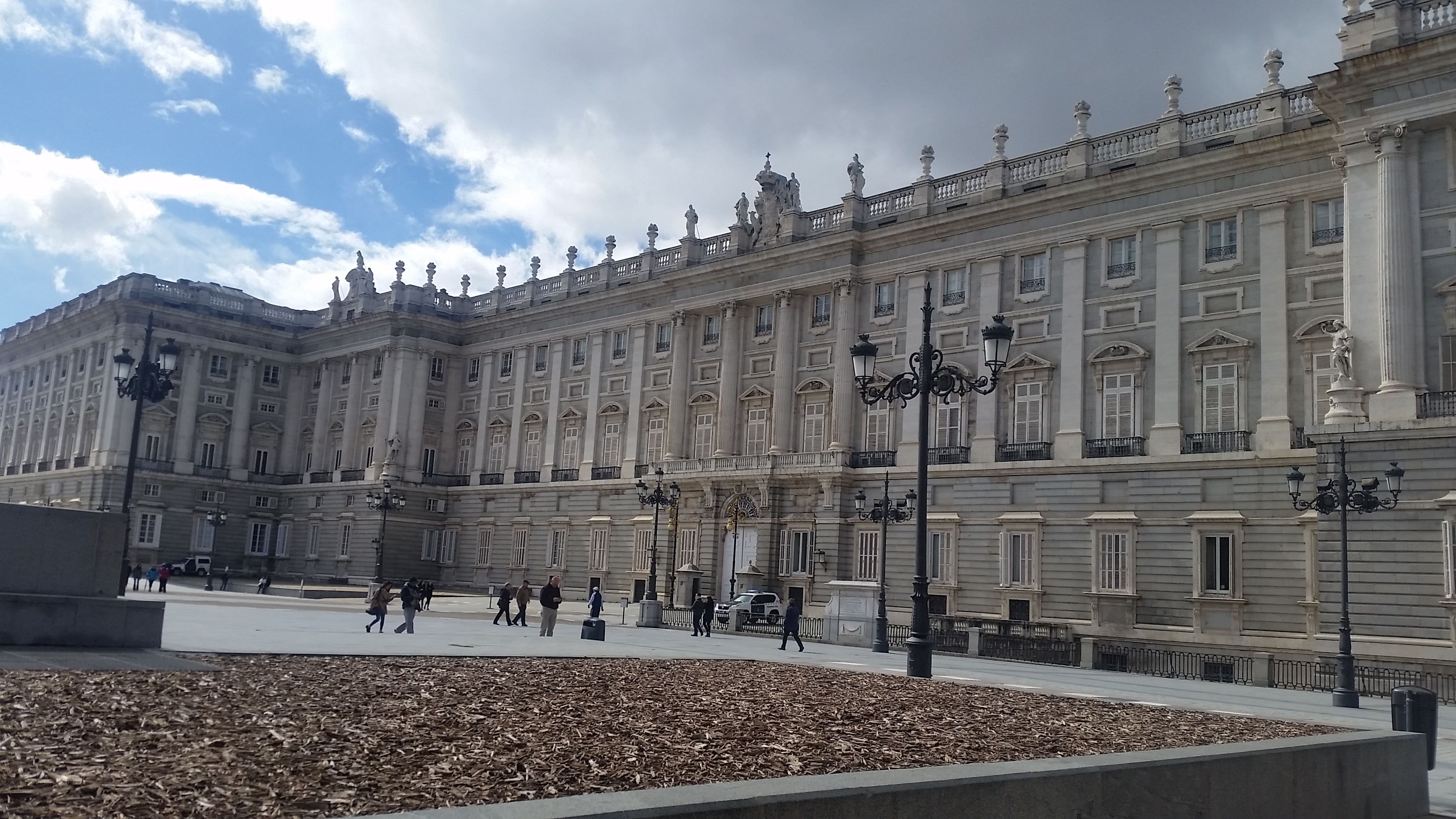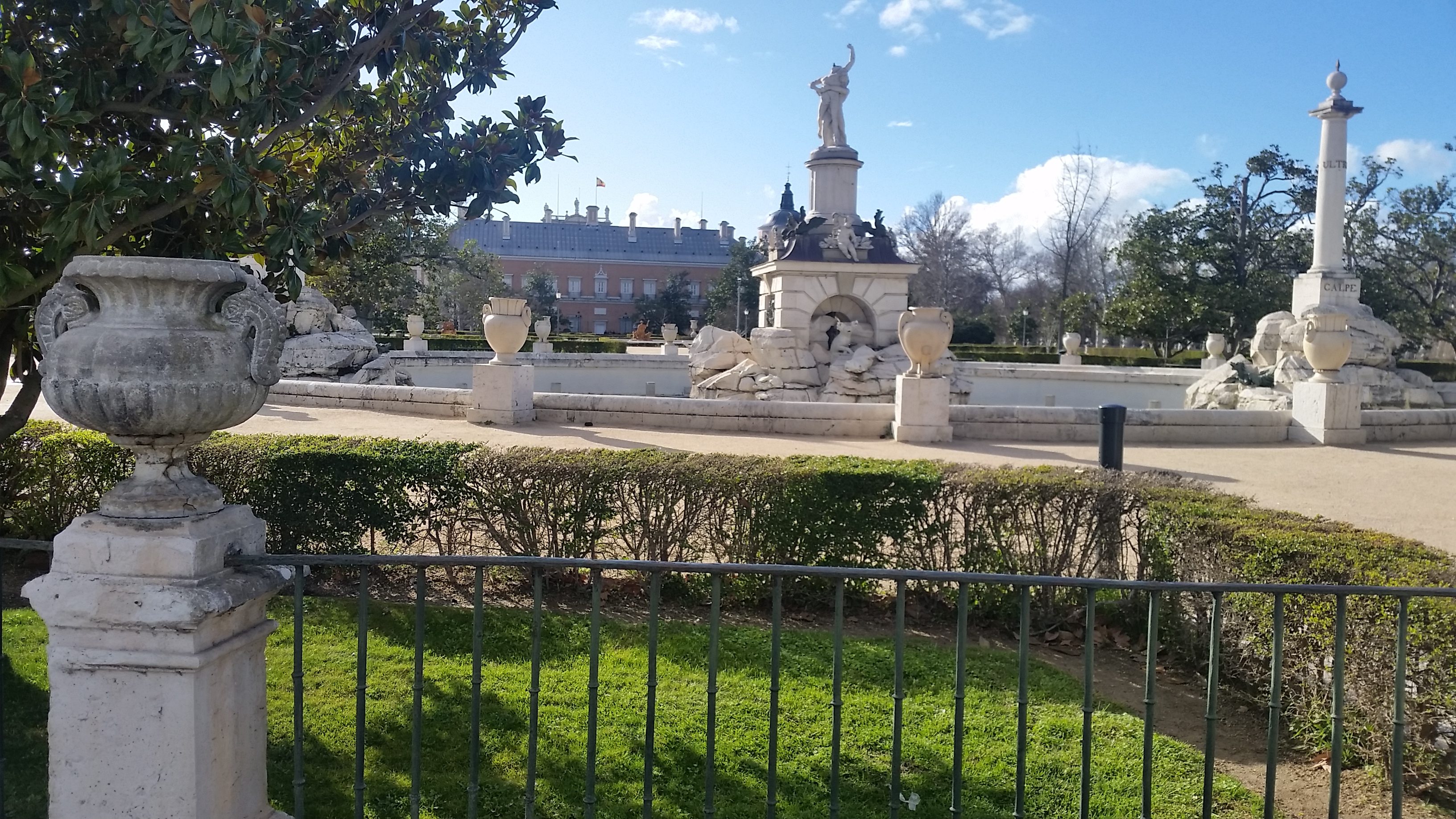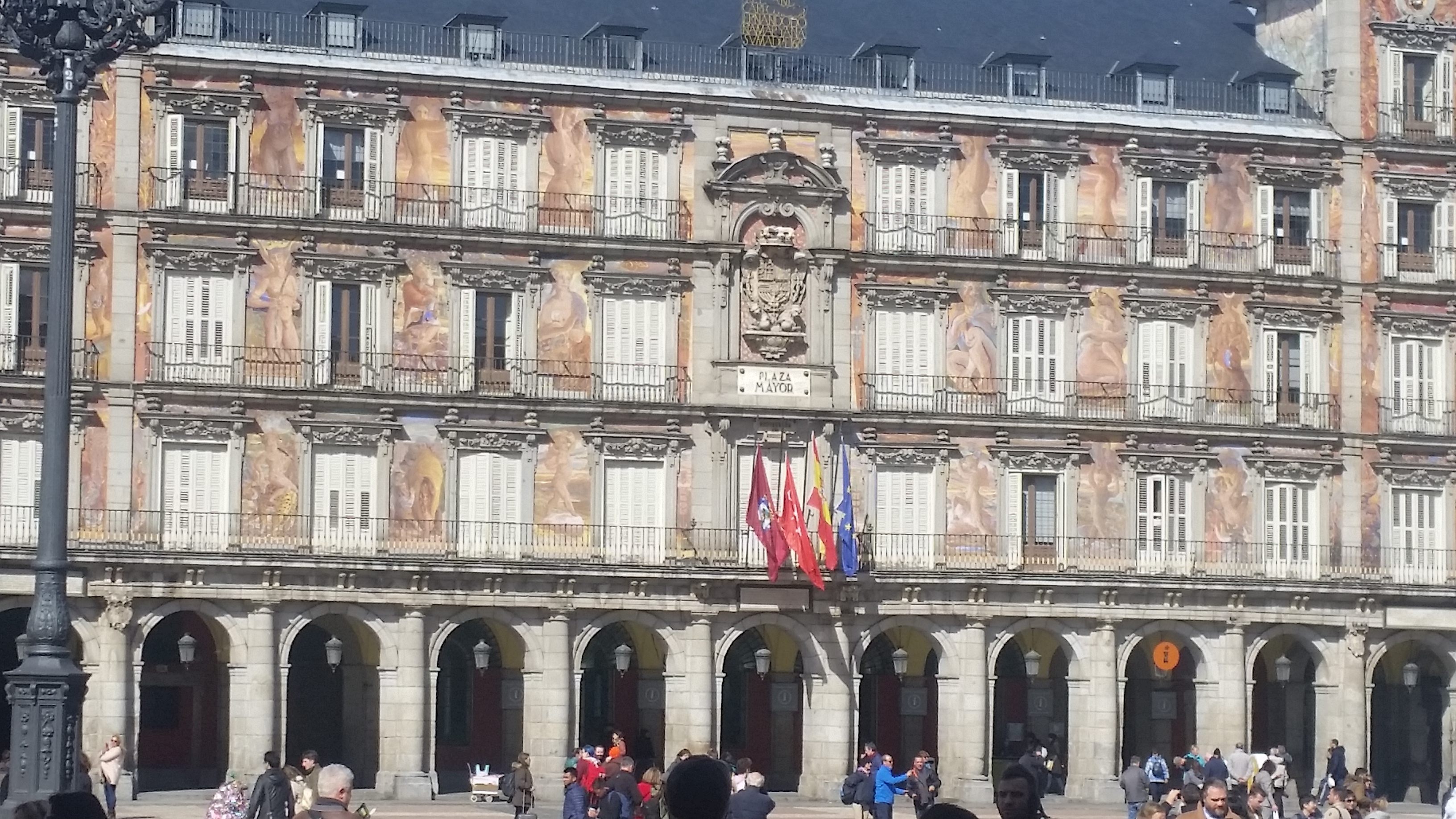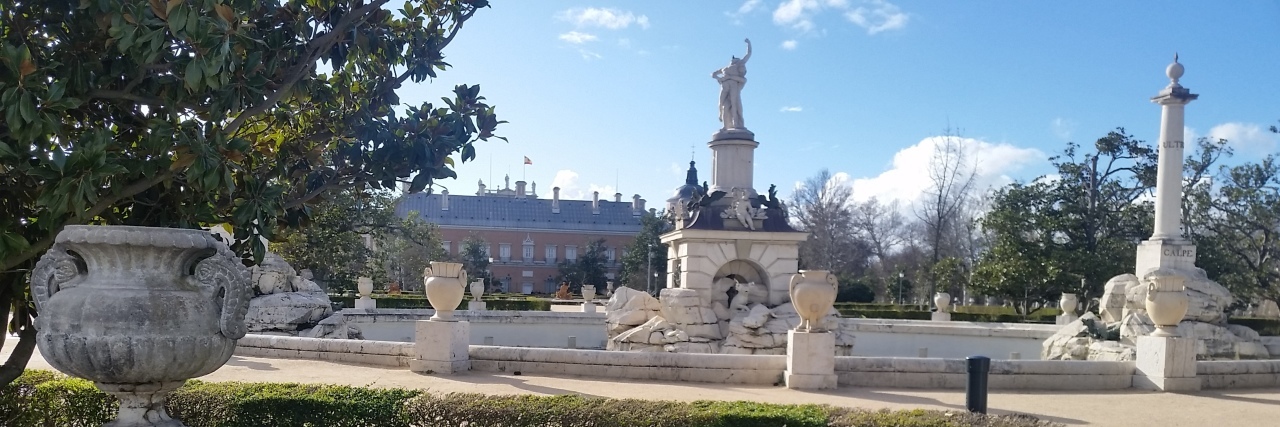Recently, a story about my wheelchair accessibility experiences in Italy was published on The Mighty. What follows here is the story of my accessibility experiences in Madrid, Spain. I traveled to Madrid with family and friends in March 2018. I’ll include information on the wheelchair accessibility of public transportation and of religious sites and palaces that are popular with tourists. I will also comment on the accessibility of a couple of museums and other attractions.
Public Transportation
Buses are accessible. I didn’t use the buses, but they were clearly marked as accessible. Each local train has an accessible car. A wheelchair can enter this car without being lifted. The accessible car I used included an accessible restroom with enough space for a wheelchair user and an assistant.
I don’t know whether taxis with wheelchair lifts are available. I wouldn’t be surprised if they are.
Tourist Attractions
Several historic buildings are either fully or partially accessible. See the website for Spain’s Patrimonio National for information hours of operation, for ticket pricing, and for additional information about the accessibility of various Royal sites. If you need to switch the site from Spanish to English, a pulldown menu allows you to do this in the upper right-hand corner of the Patrimonio National home page.
I visited the following:
El Escorial
At this centuries-old monastery and former royal residence, I saw religious art. The gardens, the royal burial sites, and some royal living quarters are open to the public, but only the chapel, a few courtyards, and a few indoor rooms are accessible to wheelchair users. Apart from the chapel, the accessible indoor spaces are empty of everything but their artwork. The accessible outdoor spaces are paved with large, uneven cobblestones. If you use a wheelchair, be prepared for a rough ride. El Escorial does offer accessible restrooms, though the one I found was locked, and I would have had to ask for a key if I had needed to use it.
The Monastery of the Barefooted Royals
We went here but didn’t go inside because we were told it is not accessible.
The Royal Monastery of the Incarnation
Unlike the other chapels we saw in Madrid, the chapel of this monastery is done in pastels. This convent is partially accessible. Wheelchair users can access several rooms on the first floor. Ramps were under construction at the time of our visit.
The Royal Palace of Madrid
 In addition to housing opulent rooms, this palace houses a collection of armor from different periods. Any spaces where the public is allowed are accessible. Wheelchair users get to ride an elegantly decorated elevator, many of the likes of which have been relegated to the past. But don’t worry. This one worked fine when I was there.
In addition to housing opulent rooms, this palace houses a collection of armor from different periods. Any spaces where the public is allowed are accessible. Wheelchair users get to ride an elegantly decorated elevator, many of the likes of which have been relegated to the past. But don’t worry. This one worked fine when I was there.
The Palace of Aranjuez
 Among the variety of decor and exhibits at this palace in the nearby town of Aranjuez our rooms displaying wedding dresses worn by members of the Spanish royal family.
Among the variety of decor and exhibits at this palace in the nearby town of Aranjuez our rooms displaying wedding dresses worn by members of the Spanish royal family.
Any areas where the public is allowed are wheelchair accessible.
The Island Garden and Prince’s Garden in Aranjuez must be lush in late spring and summer. They were, nonetheless, a pleasure to stroll through in mid-March when the trees were still hibernating a bit and the weather was misty. Be advised they are paved with gravel. A wheelchair ride on these paths is bumpy, and some wheels would get stuck. However, the atmosphere of the gardens was worth the discomfort required to see them. I also recommend visiting the Royal Barge Museum in Aranjuez.
Other Attractions
The Royal Theater (Opera)
We followed an audio version of the theater’s general tour. It was interesting to learn about the design of the building’s interior and exterior, as well as its history. The opera house The upper house is totally accessible. Still, if you use a wheelchair, you might want to call ahead before purchasing tour tickets. Staff will need to get you access to a stair lift to reach the first level above the street. We didn’t plan ahead and had to wait a bit before beginning our tour.
El Prado (Art Museum)
This art museum is totally accessible.
All over Madrid, “Las Meninas,” a painting of a princess and her ladies in waiting is reproduced on mugs and purses. Want to see the original work of art? You can find it here. Want to see paintings depicting central figures from the Spanish Inquisition? Want to see portraits of nobility? Want to see religious art? Want to see artistic interpretations of mythical figures? You will find all the above here.
Thyssen Museum
This art museum is totally accessible. In its collection are works of art from around the world — not so much from Spain.
A Private Tour With Professor Stephen Drake-Jones
My traveling companions and I also purchased a private walking tour led by Professor Stephen Drake-Jones, Chairman of The Wellington Society. On this tour, which was relatively accessible, we learned about the Habsburgs, who ruled Spain from 1516 to 1700. We walked to various locations associated with the that royal line.
Between these locations, we made three stops for tapas. The tapas were included in the price of the tour. At all the places we ate, my chair had to be lifted up a single step to get in the door. If wheelchair users have someone who can do this for them, this tour is worth considering. The restrooms in each tapa stop were on the same level as the eating areas. However, the restrooms were small — not accessible in the sense of having ample room for a wheelchair or an assistant to maneuver. On this tour, we entered buildings only for tapas. I cannot speak for the content of The Wellington Society’s other tours. The professor offers another centered around Hemingway’s time in Madrid, for example, and he says it’s also accessible.
Mercado San Miguel At the Plaza Mayor
 If you want accessible tapas without a tour, try the Mercado San Miguel. I and several other people on the Internet describe this place as a tapas food court. It is a totally accessible entrance. Inside, you will find traditional tapas, which are snack-sized. Or, if you want more of something, you can get meal-sized quantities. I saw three kinds of paella, ham and olives, ice cream, hamburgers, fruit and whipped cream, various cheeses and so much more. You can stop here during your visit to the historic square, the Plaza Mayor.
If you want accessible tapas without a tour, try the Mercado San Miguel. I and several other people on the Internet describe this place as a tapas food court. It is a totally accessible entrance. Inside, you will find traditional tapas, which are snack-sized. Or, if you want more of something, you can get meal-sized quantities. I saw three kinds of paella, ham and olives, ice cream, hamburgers, fruit and whipped cream, various cheeses and so much more. You can stop here during your visit to the historic square, the Plaza Mayor.
Additional Accessible Restrooms
It was our experience that museums and palaces had accessible restrooms. I’ve read online American fast food chains are required to have accessible restrooms. I didn’t test the accuracy of this claim in Madrid. However, I did in Rome with limited success. One McDonald’s there had a very accessible restroom, but we had to go up three steps to get to it. Another McDonald’s didn’t have an accessible restroom at all. This was the situation I found with fast food places in Rome. If anyone has additional information about the wheelchair accessibility of fast food restaurants in Madrid, please share your information by commenting on this story.
Takeaway: Wheelchair Accessibility of Madrid
Madrid is a city full of historical and modern flavors. Despite its age, Madrid demonstrates an up-to-date, inclusive approach to wheelchair accessibility that left me pleasantly surprised.

